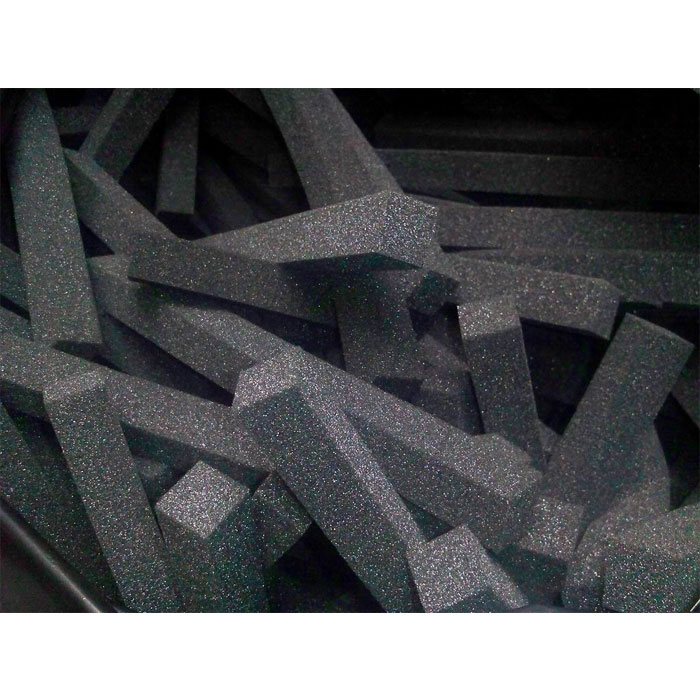- English
- Español
- Português
- русский
- Français
- 日本語
- Deutsch
- tiếng Việt
- Italiano
- Nederlands
- ภาษาไทย
- Polski
- 한국어
- Svenska
- magyar
- Malay
- বাংলা ভাষার
- Dansk
- Suomi
- हिन्दी
- Pilipino
- Türkçe
- Gaeilge
- العربية
- Indonesia
- Norsk
- تمل
- český
- ελληνικά
- український
- Javanese
- فارسی
- தமிழ்
- తెలుగు
- नेपाली
- Burmese
- български
- ລາວ
- Latine
- Қазақша
- Euskal
- Azərbaycan
- Slovenský jazyk
- Македонски
- Lietuvos
- Eesti Keel
- Română
- Slovenski
- मराठी
- Srpski језик
Polyurethane Elastomers ၏အခြေခံအမျိုးအစားများကိုပုံသွင်းခြင်းနှင့်ပြုပြင်ခြင်းနည်းလမ်းများ
2021-08-11
ပုံသွင်းခြင်းနှင့်ပြုပြင်ခြင်းနည်းလမ်းများ၏အခြေခံအမျိုးအစားများpolyurethaneelastomers များ
ပုံသွင်းခြင်းလုပ်ငန်းစဉ်ရွေးချယ်ခြင်း၏ယေဘုယျသဘောတရားအရ polyurethaneelastomer ၏ microphase ကိုခွဲခြမ်းစိတ်ဖြာပြီးကောင်းမွန်သောထုတ်ကုန်စွမ်းဆောင်ရည်၏လိုအပ်ချက်များကိုဖြည့်ဆည်းပါ။ extrudability, moldability, ductility နှင့် spinnability စသည့်အချက်များအားရည်ညွှန်း။ ပုံသွင်းခြင်းလုပ်ငန်းစဉ်ကိုအောက်ပါအခြေခံမူများအတိုင်းလုပ်ဆောင်ရမည်။ Polyurethane compound rubber, polyurethanecast rubberpolyurethanewater emulsion and polyurethanethermoplastic four basic rubber types, respectively according to rubber, casting, coating and plastic molding processing methods; through the combination of classic molding processing methods, select the series of derived rubbers Molding processing method. Analysis of the dependence of the selection of polyurethaneelastomer molding processing on deformation factors and curing factors shows that extrusion molding, injection molding and calendering are the key methods in molding processing.
1. Molding and processing method of polyurethanecompound
Polyurethane compound rubber, as rubber, has high elasticity, high molecular weight and needs to be cross-linked. Therefore, the molding process is compounding, raw rubber plasticizing, rubber mixing, molding and vulcanization. The polyurethaneelastomer can be molded by compression molding, extrusion molding, injection molding and calendering. The molding process is usually carried out at low temperature, which is conducive to morphological microphase separation. The vulcanization system of peroxides such as dicumyl peroxide and tert-butyl cumene can extend the time and carry out at low temperature, so that the permanent deformation of the polyurethaneဒြပ်ပေါင်းသည်သေးငယ်သည်၊ ချုံ့ပုံပျက်သောအရာသည်သေးငယ်ပြီးအပူခံနိုင်ရည်တိုးတက်လာသည်။ ဟုတ်ပါတယ်၊ ဆေးထိုးခြင်း၏ရွေးချယ်မှုသည်ထုတ်ကုန်၏အတိုင်းအတာတိကျမှုကိုတိုးတက်စေနိုင်ပြီး extrusion ပုံသွင်းခြင်း၏ရွေးချယ်မှုသည်ထုတ်လုပ်မှုဆက်လက်တိုးတက်စေနိုင်သည်။
2. ပုံသွင်းခြင်းနှင့်ပြုပြင်ခြင်းနည်းလမ်းpolyurethaneကော်တံ
Polyurethaneကော်တံ can be used as a complex product for pouring and infusion molding. The method is simple. As long as the liquid is injected into the mold, it can be cured into a product with a complex shape after heating. The one-step synthesis of polyurethanecasting glue is to put polymer diol, diisocyanate and chain extender together, pour it into a mold and heat it to cure after being fully mixed, and perform post-vulcanization after the size is stable. Polyurethaneကော်တံ is synthesized by prepolymerization method. The prepolymer and chain extender are put together and fully mixed. After vacuum degassing, it is injected into the mold to heat up and cure, and then vulcanized to obtain the product, and high-efficiency mold release agent is added for demolding. Reaction injection molding is essentially a one-step reaction or semi-prepolymerization reaction, but the reaction is carried out under high pressure and full mixing, which greatly improves the strength and adhesion properties of the product.
3. Polyurethaneရေ emulsion ပုံသွင်းပြုပြင်ခြင်းနည်းလမ်း
Polyurethane water emulsion သည်သဘာဝပတ်ဝန်းကျင်နှင့်သဟဇာတဖြစ်သော်လည်းဖလင်ဖွဲ့စည်းမှုအားနည်းသည်။ ၎င်းကိုသင့်တင့်လျောက်ပတ်စွာချိတ်ဆက်ရန်လိုအပ်ပြီးဖြန်းခြင်းဖြင့်ပုံသွင်းနိုင်သည်။
4. Polyurethane thermoplastic ပုံသွင်းပြုပြင်ခြင်းနည်းလမ်း
ပုံသွင်းခြင်းလုပ်ငန်းစဉ်ရွေးချယ်ခြင်း၏ယေဘုယျသဘောတရားအရ polyurethaneelastomer ၏ microphase ကိုခွဲခြမ်းစိတ်ဖြာပြီးကောင်းမွန်သောထုတ်ကုန်စွမ်းဆောင်ရည်၏လိုအပ်ချက်များကိုဖြည့်ဆည်းပါ။ extrudability, moldability, ductility နှင့် spinnability စသည့်အချက်များအားရည်ညွှန်း။ ပုံသွင်းခြင်းလုပ်ငန်းစဉ်ကိုအောက်ပါအခြေခံမူများအတိုင်းလုပ်ဆောင်ရမည်။ Polyurethane compound rubber, polyurethanecast rubberpolyurethanewater emulsion and polyurethanethermoplastic four basic rubber types, respectively according to rubber, casting, coating and plastic molding processing methods; through the combination of classic molding processing methods, select the series of derived rubbers Molding processing method. Analysis of the dependence of the selection of polyurethaneelastomer molding processing on deformation factors and curing factors shows that extrusion molding, injection molding and calendering are the key methods in molding processing.
1. Molding and processing method of polyurethanecompound
Polyurethane compound rubber, as rubber, has high elasticity, high molecular weight and needs to be cross-linked. Therefore, the molding process is compounding, raw rubber plasticizing, rubber mixing, molding and vulcanization. The polyurethaneelastomer can be molded by compression molding, extrusion molding, injection molding and calendering. The molding process is usually carried out at low temperature, which is conducive to morphological microphase separation. The vulcanization system of peroxides such as dicumyl peroxide and tert-butyl cumene can extend the time and carry out at low temperature, so that the permanent deformation of the polyurethaneဒြပ်ပေါင်းသည်သေးငယ်သည်၊ ချုံ့ပုံပျက်သောအရာသည်သေးငယ်ပြီးအပူခံနိုင်ရည်တိုးတက်လာသည်။ ဟုတ်ပါတယ်၊ ဆေးထိုးခြင်း၏ရွေးချယ်မှုသည်ထုတ်ကုန်၏အတိုင်းအတာတိကျမှုကိုတိုးတက်စေနိုင်ပြီး extrusion ပုံသွင်းခြင်း၏ရွေးချယ်မှုသည်ထုတ်လုပ်မှုဆက်လက်တိုးတက်စေနိုင်သည်။
2. ပုံသွင်းခြင်းနှင့်ပြုပြင်ခြင်းနည်းလမ်းpolyurethaneကော်တံ
Polyurethaneကော်တံ can be used as a complex product for pouring and infusion molding. The method is simple. As long as the liquid is injected into the mold, it can be cured into a product with a complex shape after heating. The one-step synthesis of polyurethanecasting glue is to put polymer diol, diisocyanate and chain extender together, pour it into a mold and heat it to cure after being fully mixed, and perform post-vulcanization after the size is stable. Polyurethaneကော်တံ is synthesized by prepolymerization method. The prepolymer and chain extender are put together and fully mixed. After vacuum degassing, it is injected into the mold to heat up and cure, and then vulcanized to obtain the product, and high-efficiency mold release agent is added for demolding. Reaction injection molding is essentially a one-step reaction or semi-prepolymerization reaction, but the reaction is carried out under high pressure and full mixing, which greatly improves the strength and adhesion properties of the product.
3. Polyurethaneရေ emulsion ပုံသွင်းပြုပြင်ခြင်းနည်းလမ်း
Polyurethane water emulsion သည်သဘာဝပတ်ဝန်းကျင်နှင့်သဟဇာတဖြစ်သော်လည်းဖလင်ဖွဲ့စည်းမှုအားနည်းသည်။ ၎င်းကိုသင့်တင့်လျောက်ပတ်စွာချိတ်ဆက်ရန်လိုအပ်ပြီးဖြန်းခြင်းဖြင့်ပုံသွင်းနိုင်သည်။
4. Polyurethane thermoplastic ပုံသွင်းပြုပြင်ခြင်းနည်းလမ်း
Polyurethane thermoplastic is a kind of linear polymer, which can be used for reversible molding processes such as extrusion, injection molding, blow molding, calendering, and spinning. Semi-prepolymerization can effectively microphase separation. The calendering temperature is adjusted moderately, so that there is a balance between melt viscosity, fluidity and melt strength. In order to increase the hardness of polyurethanethermoplastics, micro-crosslinking is usually required to improve the mechanical properties of polymer materials, especially solid materials, on the basis of extrudability, moldability and ductility.




